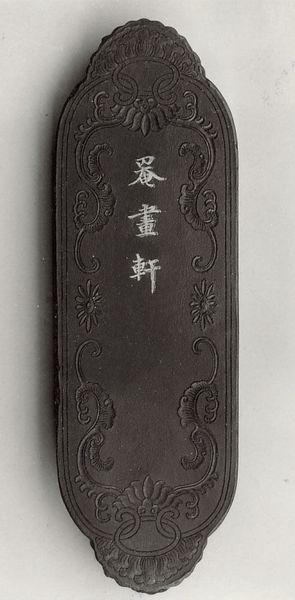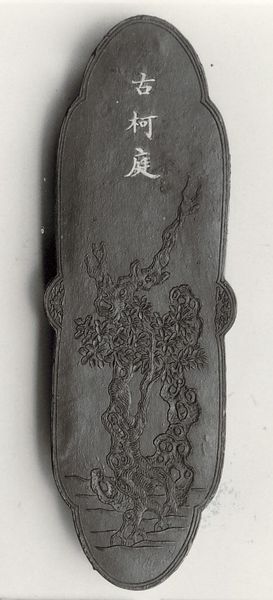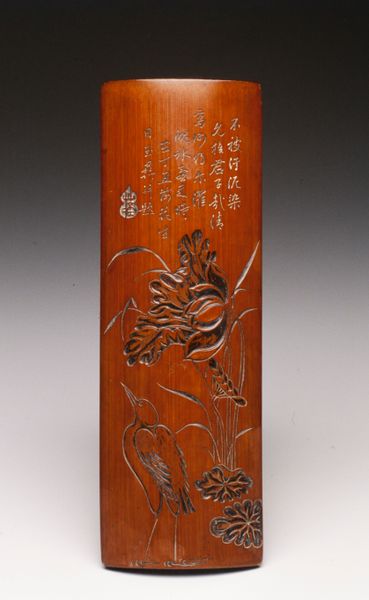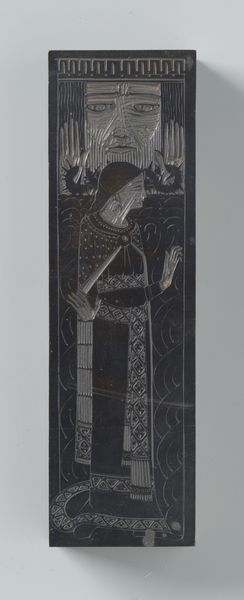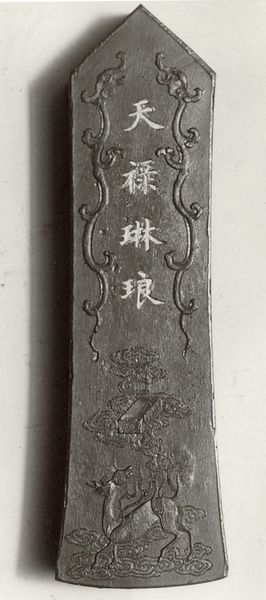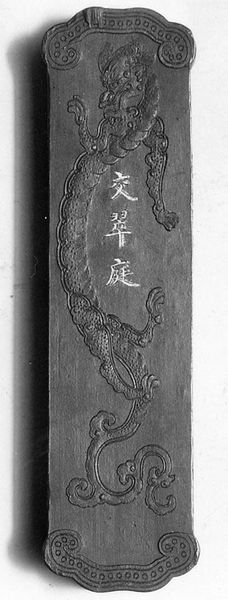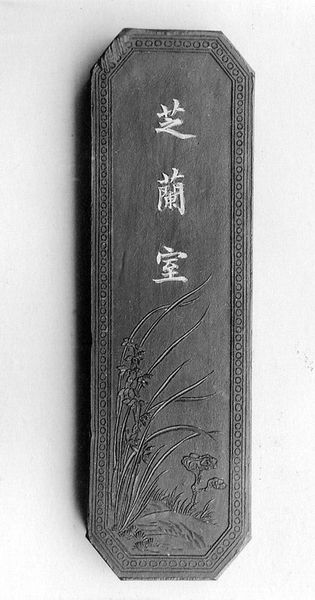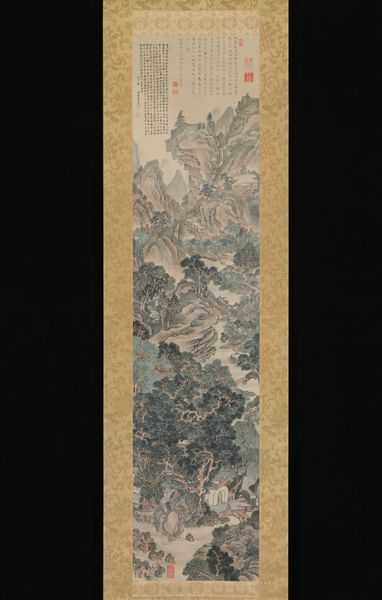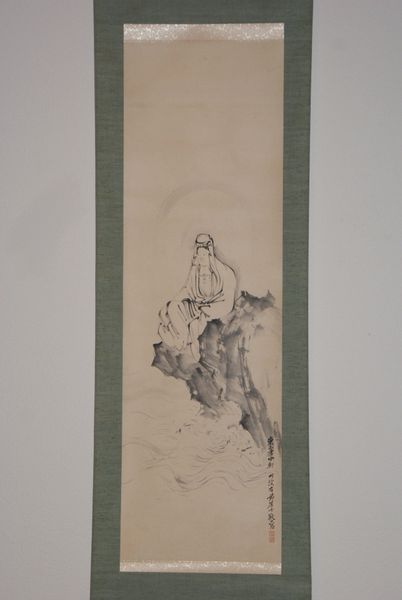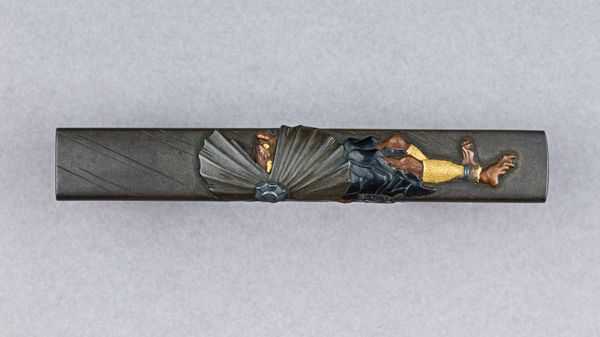
drawing, carving, relief, ink, sculpture
#
drawing
#
carving
#
sculpture
#
asian-art
#
relief
#
landscape
#
ink
#
sculpture
#
china
#
calligraphy
Dimensions: H. 3 7/8 in. (9.8 cm); W. 1 1/16 in. (2.7 cm)
Copyright: Public Domain
Editor: So this is the "Ink Tablet," dating from between 1871 and 1933, by Xiu Fangzhai. It's located here at the Met. The carved landscape really draws me in – it’s so detailed but also feels like it fades into the dark background. What's your take on the imagery here? Curator: The enduring power of the "Ink Tablet" resides in its symbolic vocabulary. Notice the landscape—mountains were revered as sacred places, abodes of immortals and symbols of stability, embodying the concept of permanence within a changing world. Editor: I see how the mountains have a deeper connection to stability. Does that apply to the water imagery as well? Curator: Absolutely. The water, often depicted as mist or flowing rivers, signifies adaptability, change, and the cyclical nature of life. This opposition, stability and change, is essential to understanding its message. Also, what do you make of the inscription, and where it's placed in relationship to the other elements of the tablet? Editor: It seems separate somehow... the eye is drawn into the landscape carving before the calligraphy on the side. Curator: Indeed. Consider the visual weight it holds versus the landscape—it denotes authorial presence and lends legitimacy. Inkstones like these were not mere tools but objects of contemplation, miniature worlds reflecting profound philosophical ideas. It encouraged the user to consider balance, harmony and their relationship with the natural world. Editor: That’s fascinating. It completely changes how I see it, not just a functional item but as something rich with meaning. Thanks! Curator: It reminds us how everyday objects can be powerful carriers of culture and history. It’s been my pleasure.
Comments
No comments
Be the first to comment and join the conversation on the ultimate creative platform.
